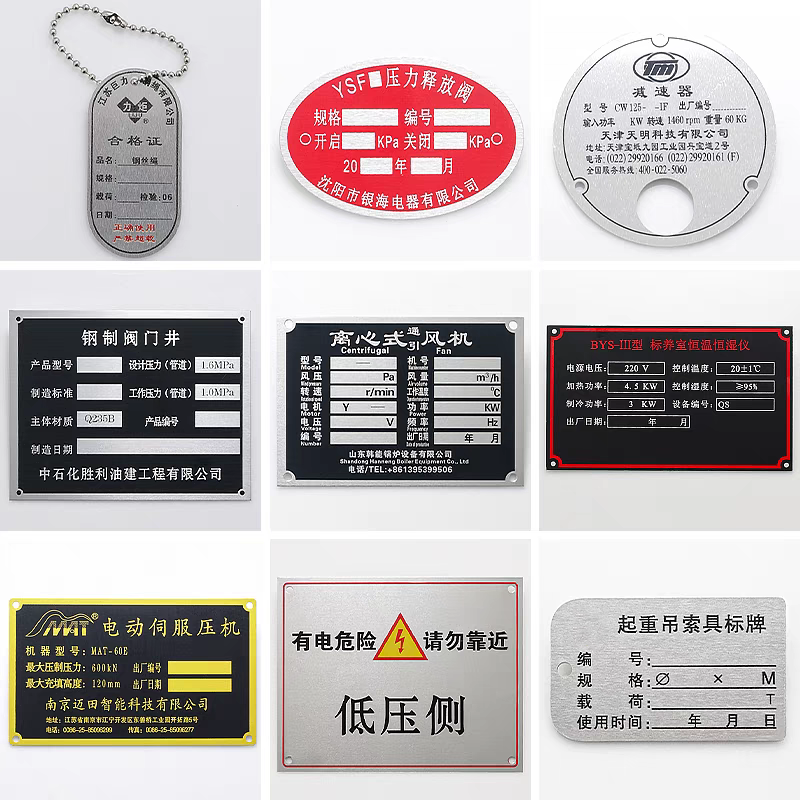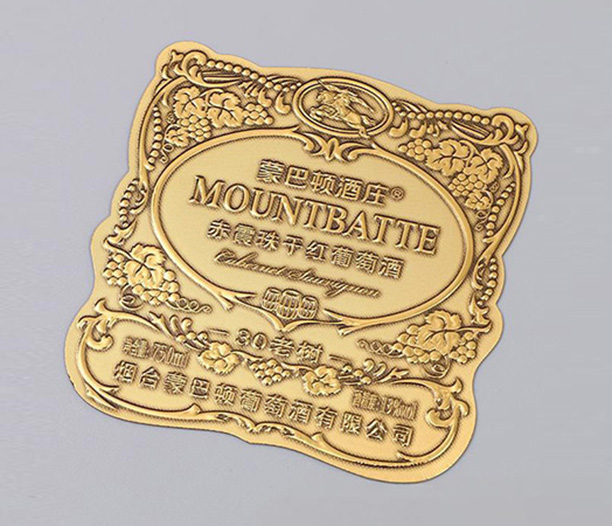If you work in plumbing, facility management, or industrial maintenance, you know that a small, unmarked valve can cause major headaches. Identifying the correct trap in a steam system or a complex plumbing network is not just a matter of convenience—it's critical for efficiency, safety, and cost-effective operations. This is where the humble yet indispensable trap identification tags come into play. More than just a piece of metal or plastic, a well-chosen and properly installed tag is a permanent record, a troubleshooting aid, and a compliance tool all in one.
This article will walk you through everything you need to know about trap identification tags, from their core function to selecting the right type for your specific needs and understanding the investment involved.

What Exactly Are Trap Identification Tags?
At its core, a trap identification tag is a durable label affixed directly to a steam trap, condensate drain, or other fluid system trap. Its primary purpose is to provide immediate, unambiguous identification of that specific component within a larger system.
Think of it like a license plate for your equipment. The tag typically contains crucial information such as:
A unique identification number or code.
The trap type (e.g., inverted bucket, thermodynamic, float and thermostatic).
The manufacturer and model number.
The date of installation.
System pressure and temperature ratings.
This standardized information transforms a maze of anonymous pipes and valves into a well-documented, manageable asset. The systematic use of trap identification tags is the foundation of any modern, proactive maintenance program.
Why Your Facility Needs a Proper Tagging System
Neglecting to tag your traps is a gamble with operational efficiency. The benefits of implementing a robust system are immediate and substantial.
1. Drastically Reduced Troubleshooting Time
When a trap fails, every minute of downtime costs money. A maintenance technician can instantly locate the specific faulty trap using the unique ID on the trap identification tag, rather than spending valuable time manually testing multiple possibilities. This swift identification leads to faster repairs and restored system performance.
2. Improved Maintenance and Audit Accuracy
A tagging system allows for precise tracking of each trap's service history. Technicians can log inspections, repairs, and replacements against the trap's unique ID, creating a valuable data trail. This history is invaluable for predictive maintenance, helping to identify patterns and schedule replacements before catastrophic failures occur. During energy audits, inspectors can quickly verify the status and efficiency of the entire trap population.
3. Enhanced Personnel Safety and Training
Clear identification prevents accidental closure of the wrong valve or work on the wrong system, mitigating potential safety hazards. For new technicians, trap identification tags serve as an on-the-job training tool, helping them learn the system layout and the different types of traps in use.
4. Significant Cost Savings on Energy and Repairs
Failed steam traps, for instance, can waste enormous amounts of energy. A proactive tagging and maintenance program ensures traps are functioning correctly, directly reducing energy bills. Furthermore, by enabling timely and correct repairs, you extend the lifespan of your traps and avoid more expensive collateral damage.
A Guide to the Different Types of Trap Identification Tags
Not all tags are created equal. The environment and application dictate the best material and attachment method. Choosing the right trap identification tag is crucial for its longevity and legibility.
Metal Tags for Harsh Environments
Stainless Steel Tags: These are the gold standard for durability. They are highly resistant to corrosion, extreme temperatures, chemicals, and physical abrasion. Ideal for high-temperature steam lines, outdoor applications, and industrial plants where tags are exposed to harsh conditions.
Aluminum Tags: A cost-effective and lightweight alternative to stainless steel. They offer good corrosion resistance and are suitable for many indoor and less aggressive outdoor environments. They are easy to stamp or engrave for permanent marking.
Durable Plastic and Composite Tags
Anodized Aluminum Composite: These tags feature a plastic core laminated between thin layers of anodized aluminum. They combine the weather resistance of metal with the flexibility and cost-effectiveness of plastic. They work well in a wide range of temperatures and are often used for chemical and UV-exposure resistance.
High-Temperature Plastic Tags: Made from materials like polyester or vinyl with high-temp adhesives, these tags are suitable for many standard plumbing and lower-temperature steam applications. They are typically printed on and protected by a laminated overlay.
Attachment Methods: Ensuring Your Tag Stays Put
Stainless Steel Wire: The most secure method for metal tags, involving a heavy-gauge wire looped through a hole in the tag and twisted tightly around the pipe or trap body. It is virtually permanent and withstands high heat and physical impact.
Self-Locking Cable Ties: Made from nylon or more heat-resistant materials, these are quick and easy to install. They are ideal for plastic tags and applications where frequent removal is not required.
High-Temperature Adhesives: For smooth, clean surfaces, adhesive-backed tags offer a very clean look and easy application. It is critical to select an adhesive rated for the maximum operating temperature of the trap to prevent the tag from falling off.

How to Select the Right Trap Identification Tag: A Step-by-Step Guide
Selecting the optimal trap identification tag involves assessing several key factors related to your specific operating environment.
Step 1: Assess the Operating Environment
This is the most critical step. Ask yourself:
What is the maximum temperature? Tags on a high-pressure steam line will need a much higher temperature rating than those on a domestic hot water line.
Is the tag exposed to chemicals, oils, or solvents? This will determine the required chemical resistance.
Is the application indoors or outdoors? Outdoor tags must withstand UV radiation, moisture, and wide temperature swings.
Is there potential for physical abrasion or impact? A tag in a tight mechanical room might get knocked around more than one in an open area.
Step 2: Determine the Required Information and Durability
Decide what data needs to be on the tag and how permanently it needs to be marked.
For permanent, unchangeable information (like a unique ID), metal stamped or engraved tags are best.
For information that might change, a writeable surface with a laminated overlay or a tag designed for pre-printed labels might be suitable.
Step 3: Choose the Attachment Method
Match the attachment method to the tag material and environmental challenges. For the most demanding applications, a stainless steel tag with a stainless steel wire is the benchmark for reliability.
Step 4: Consider Long-Term Readability and Compliance
Ensure the tag's size, color, and font are easily readable from a standard working distance. Using color-coded trap identification tags can further speed up visual inspections—for example, using one color for steam traps and another for drain valves.
Understanding the Cost Factors of Trap Identification Tags
The price of trap identification tags can vary widely, but viewing them as a long-term capital investment rather than a simple expense is key. Factors influencing cost include:
Material: Stainless steel is more expensive than aluminum, which is more expensive than high-temperature plastics.
Customization: Blank tags are cheaper, but pre-stamped, engraved, or pre-printed tags with your specific data will have a higher unit cost.
Quantity: Like most products, purchasing in bulk typically lowers the per-unit price.
Attachment Method: Kits that include wires or specialized ties will cost more than the tags alone.
While the initial outlay for a full set of high-quality stainless steel trap identification tags might seem significant, the return on investment through reduced labor, energy savings, and prevented failures makes it one of the most cost-effective upgrades a maintenance department can make.
Implementing Your Tagging System for Maximum Benefit
Simply buying tags isn't enough. A successful implementation requires a plan.
Audit and Map: Start by creating a comprehensive list of all traps in your facility. Assign each one a unique number.
Standardize: Choose a consistent tag style, information format, and attachment method for your entire facility to avoid confusion.
Install Systematically: Install the trap identification tags according to your map, ensuring they are securely attached and clearly visible.
Integrate with Software: Input the unique IDs and trap data into your Computerized Maintenance Management System (CMMS) or tracking spreadsheet. This digital-physical link is where the true power of the system is unlocked.
Frequently Asked Questions (FAQs) About Trap Identification Tags
Q1: Can I use a regular label maker to create my own trap identification tags?
A1: For temporary identification or in very mild, indoor office-type plumbing environments, this might be sufficient. However, for any industrial, steam, or outdoor application, it is not recommended. The adhesives and materials used in standard label makers are not designed to withstand high heat, UV exposure, moisture, or chemical contact. They will quickly fade, peel, or become brittle, rendering your tagging system useless and creating a maintenance problem itself.
Q2: How often should the information on a trap identification tag be updated?
A2: The core identification data on a trap identification tag, such as the unique ID number and trap type, should be considered permanent. If a trap is replaced, the old tag should be removed and a new one installed with the new trap's information and a new installation date. The tag itself is a fixed record; the updates happen in your maintenance software or logbook, which is linked to the permanent tag ID.
Q3: What is the best way to attach a tag to a very hot steam trap?
A3: For traps operating at high temperatures (often above 212°F / 100°C), the most reliable method is a metal trap identification tag made of stainless steel or aluminum, attached with a stainless steel wire. Avoid plastic cable ties and adhesive-backed tags unless they are specifically rated for the continuous operating temperature of your system, as they will fail.
Q4: Are there standardized color codes for trap identification tags?
A4: While there is no single universal mandatory standard, many industries and companies adopt their own internal color-coding systems for trap identification tags to enable rapid visual assessment. A common practice is to use colors to indicate the last inspection status—for example, green for "passed," red for "failed," and yellow for "needs service." Establishing a consistent color scheme within your facility is a highly effective best practice.
Q5: Where is the best location to physically place the tag on the trap?
A5: The tag should be placed where it is easily visible to a technician performing an inspection without requiring them to move insulation or reach into cramped spaces. A common and effective location is on the downstream pipe, a short distance from the trap body itself. Ensure it is secured tightly so it does not vibrate or flap, which could lead to fatigue and failure of the wire or tag.






